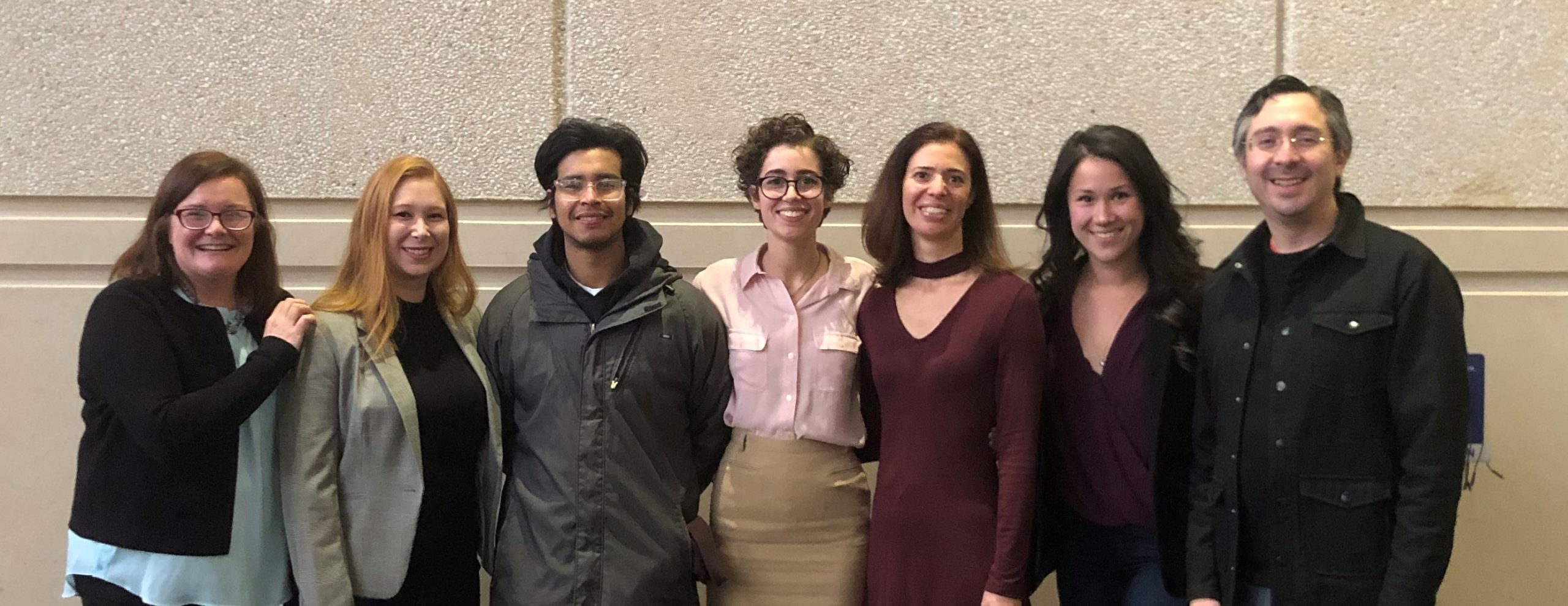
Like any cutting-edge research team, the undergrad and grad students assembled in Dr. Geraldine Grant’s molecular and cell biology lab at George Mason’s Science and Technology Campus knew that in order for their project to be successful they needed a few things to break their way. Specifically, for their 4-VA grant “Prognostic Noninvasive Biomarker Investigation of Induced Sputum and Peripheral Blood in IPF” (Idiopathic Pulmonary Fibrosis), they would need a lot of science, a touch of luck, a drop of art, and more than a little bit of help from their friends.
Their goal was ambitious: Identify biomarkers that would help track the diagnosis and progression of the disease as well as the efficacy, if even detected, of medical treatment. The goal would be a tall order for this difficult-to-diagnose and difficult-to-treat lung condition which affects more than 200,000 people in the U.S alone.
IPF is a progressive, fatal lung disease that is survived by few patients three to five years after diagnosis. With IPF, patients experience severe scarring (fibrosis) of the lungs for an unknown reason. Over time, the scarring gets worse and it becomes difficult for the patient to take in a deep breath and inhale enough oxygen to fill the lungs.
Long-time Grant Lab member and part of the initial team writing the 4-VA@Mason proposal, Dr. Luis Rodriguez explains, “Diagnosing IPF is a difficult task. Most of the time, diagnosis is simply a continuing series of elimination testing. Doctors back into the diagnosis because it was determined that it’s not A, B, or C.” What’s more, Rodriguez points out, “The disease can present in a number of different ways and the only standard for diagnosis confirmation is a sample from the lungs, but through that, the patient is at critical risk.”
However, tackling the diagnosis was just a part of the Grant lab challenge. Treating the disease can also prove problematic, as it can progress slowly or rapidly and the efficacies of treatment are difficult to determine. With few therapeutic options, little to no systematic tracking of treatment, and a wide range of patient responses to said treatment, the work was cut out for the team.
First, they needed data, and a reliable stockpile at that. Their objective was to get a large sample of patients suffering with the disease and to extract RNA. The next step would be to correlate the RNA with the current status of each patient’s disease, which included precise measurements of two important criteria: 1. How they breathe in and out, and 2. How far they can walk in six minutes.
That’s when they called on their first partner in the grant project, Northern Virginia’s INOVA Hospital and Dr. Steve Nathan. INOVA has long been a recognized care and treatment center for IPF and has a history of successful lung transplants for IPF patients. Through INOVA, the Grant team wanted to build that necessary data set to track, if possible, the measurements of disease progression. Nathan and the clinic were all in.
With a base of 40 patients in Nathan’s province, the Grant team got to work – monitoring, measuring and capturing data. The process was long and tedious, and they encountered their share of difficulties. One such roadblock meant refining mitochondria sensors in the patient blood samples measuring changes in oxygen that, in turn, captured the progression of the disease and the effectiveness of the treatment. Their perseverance paid off, however, with a statistically significant reliable data set. (Which, Rodriguez points out, continues to grow and provide valuable information.)
Their next task, then, was to analyze said data in a meaningful and productive way. That’s when they called in their second partner Dr. Norou Diawara, of the Math Department at 4-VA partner school Old Dominion University. Diawara has vast experience and expertise in the field of Biostatistics, which fit the bill for the Grant project.
All efforts paid off with noteworthy results, as the research identified gene signatures that indicated what patients responded to treatment and those that didn’t – a giant leap forward in their medicine.
What’s more, Rodriguez notes, is that the initial grant has spawned a cadre of further opportunities including OSCAR undergraduate students continuing the analysis of the data set, and grants submitted to NIH, as well as to NSF for a grant on the biology of mitochondria. The project has also been featured in several poster presentations. One such notable presentation was at the Pulmonary Fibrosis Foundation Summit in September, a convocation of the leaders of research and treatment of Pulmonary Fibrosis, where the poster ranked in the Top 10.

“The 4-VA grant got this ball rolling,” concludes Rodriguez, “and we’ve progressed a long way from the start of this effort. However, I can see this initial research continuing to produce important results for years to come.”

